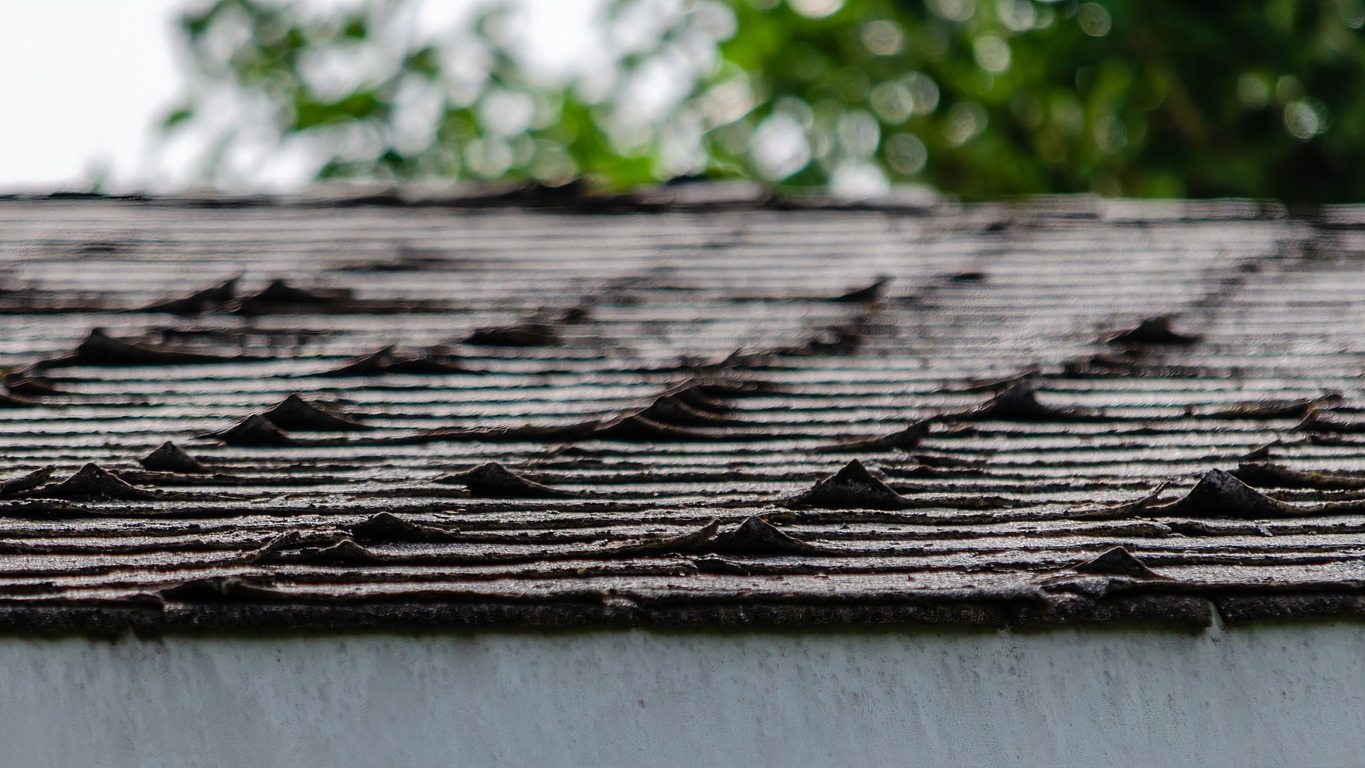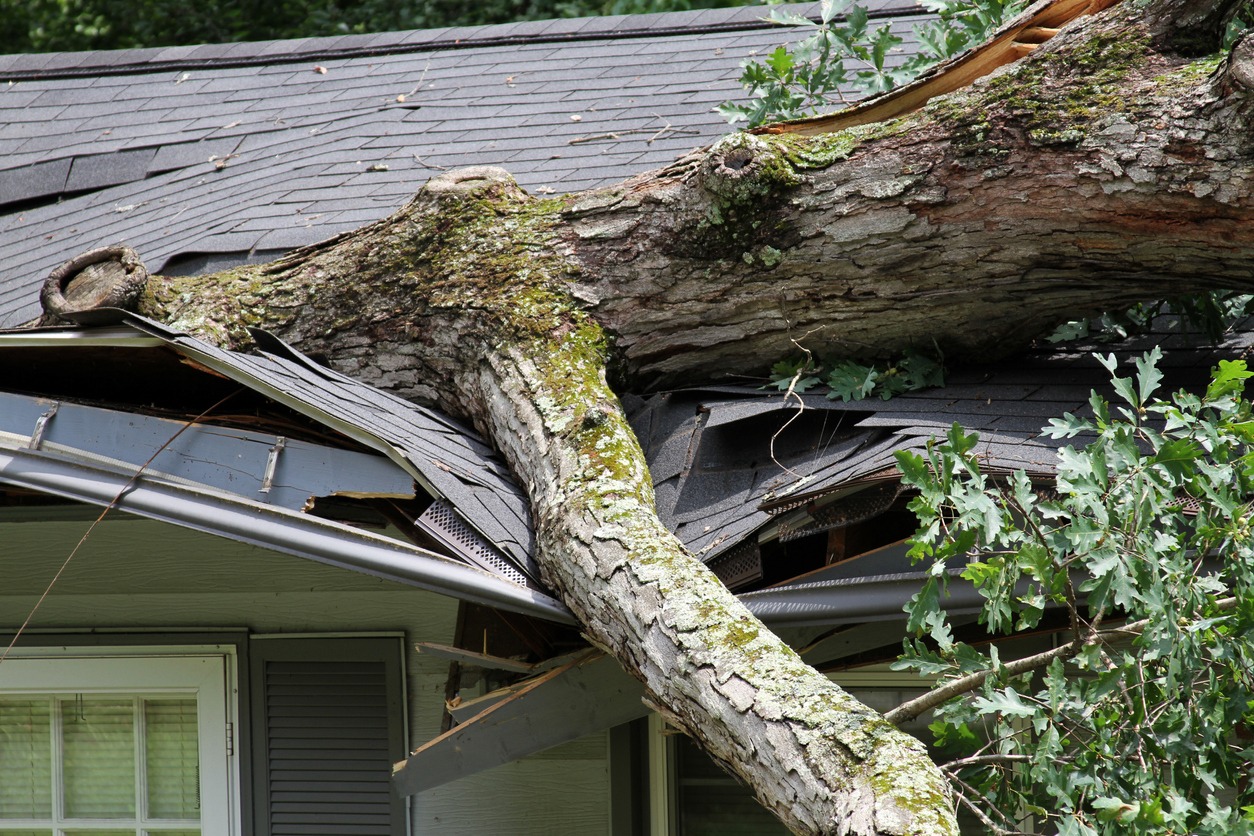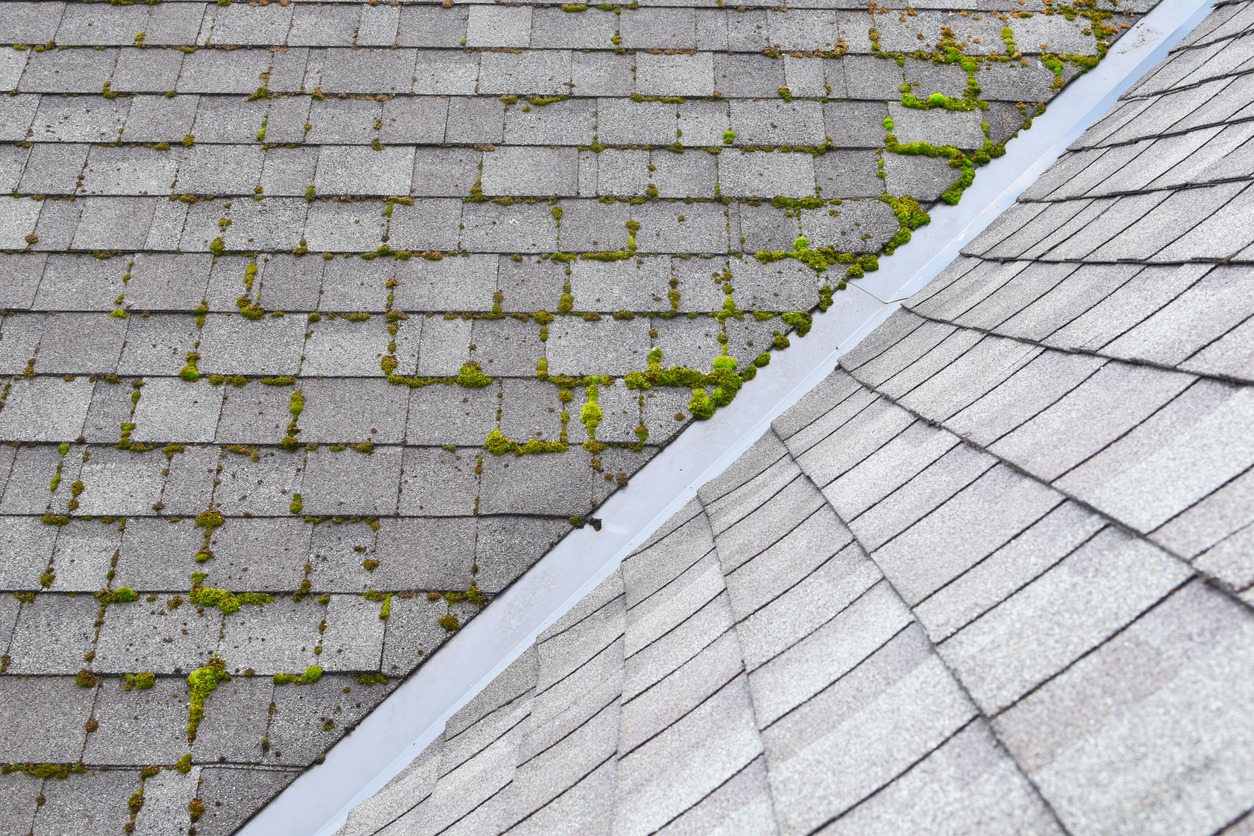Roofs face the relentless fury of the elements. Blazing sun, fierce winds, freezing temperatures, and relentless rain all wear down this crucial protective barrier. While certain roofing types might endure for up to 25 years, shingles eventually weather, warp, crack, tear, or disintegrate. It’s tough to gauge the extent of the damage from the ground, but these signs that you need a new roof will provide clarity.
1. Your roof is about 25 years old.
Even if your roof seems fine, the passage of time affects its resilience. Although you might not yet notice any issues, all roofs have a limited lifespan. If you’re approaching this lifespan, it’s a good idea to think about replacing your roof before problems become apparent. Asphalt roofs typically last between 25 and 30 years, so if your roof is around this age, consider a replacement.
For reference, the lifespan of a roof varies by material. While about 25 years is the lifespan of an asphalt roof, not all roofing materials have the same longevity. On average, expect the following lifespans:
- Asphalt: 20 years
- Concrete or clay: Over 100 years
- Wood: 25 years
- Metal: 40 to 80 years
- Slate: 60 to 150 years
2. Shingles are starting to curl.
Shingles can curl up in two ways: cupping, where the edges lift upwards, and clawing, when the middle rises while the edges remain flat. Both types of curling signal weathering suggest potential problems, possibly even leaks, in the near future.
Depending on how severe the curling is, it could be anywhere from a year to five years before you’ll need a new roof.
3. You’re seeing cracked shingles.
From the ground, you can see cracks stretching across a couple of shingles. But those aren’t actually cracks – they’re tears resulting from repeated cycles of thermal expansion and contraction. As the sun heats the roof during the day, the shingles expand. As temperatures drop, they contract. Over time, these tears form, becoming vulnerable spots for leaks and structural issues.
Sometimes, the cracks are isolated to one particular area, which can be a result of a direct hit from hail or debris. But if the cracking is random throughout the roof, it’s a sign that you must replace the whole thing.
4. Some shingles are missing, and you keep finding pieces in your yard.
When shingles start disappearing, it’s not a great sign. This happens when a shingle weakens, and the adhesive that holds its bottom down starts to give way from the layer below. When the timing is right, a strong gust of wind can easily send a shingle to the ground.
For roofs that are showing their age, it’s common to spot small fragments of shingles in the yard. Figuring out where these bits come from isn’t always straightforward. Homeowners who repeatedly find these small shingle bits in their yards after gusty winds should consider either examining their roofs more closely or bringing in a professional for an inspection.
However, don’t fret too much if just one or two shingles go missing. Sometimes, the cause could be shoddy installation. A speedy repair might bring the roof back to its former glory, even if the new shingle’s color isn’t a perfect match.
You can keep fixing small patches until bigger issues arise. However, if your roof starts looking like a checkerboard due to scattered shingle replacements, many people choose to opt for an overall replacement.
5. Your roof is leaking.
Obvious water damage inside your home is a clear indicator that your roof isn’t doing its job adequately anymore. This damage might stem from ice dams, compromised shingles, corroded flashing, or poor installation techniques. Whatever the root cause, leaks don’t mend themselves, and homeowners should act promptly to repair or replace their roofs. A leaky roof can invite mold and even attract unwelcome pests like carpenter ants.
When you find water dripping onto your furniture, floors, or even your head, it’s a sign that you might need a roof leak repair and perhaps even a new roof. If your roof is under ten years old, it could be due to issues like damaged chimney flashing or a cracked pipe boot, which can be fixed up. However, if you had leak issues over and over again for the past decade, consider replacing the roof completely.
6. There are huge water stains on walls or ceilings.
Sometimes, a damp spot on your wall or ceiling catches your eye immediately. Other times, you might spot a faded water stain as evidence. You might even venture up to the attic after a while and find signs like water damage, damp roof fascia boards, or wet insulation. If you spot visible water indications on your walls or ceiling, reach out to a professional roofer to pinpoint the source. While water damage marks can arise from leaky appliances or burst pipes, watermarks in other areas could point to roofing issues. If the water damage is severe, a repair won’t cut it.
7. Your roof is severely damaged by a storm.
Storm damage is a top culprit behind roof replacements. Heavy storms can wreak havoc on roofs, regardless of their pre-storm condition. Whether it’s ice storms, rainstorms, tornadoes, or powerful derecho storms, your roof could take a beating. This is particularly concerning for homes in areas prone to tornadoes or hurricanes. High-speed winds can yank shingles right off or lift and crack them. This leaves your roof susceptible to leaks and UV harm. When windstorms are followed by rain or snow, moisture can swiftly infiltrate the roofing system, leading to water damage. Wind-carried debris can also puncture shingles.
Whether your roof is showing its age, displaying damage, or recently endured a fierce storm, don’t delay when you suspect an issue! Roof problems can be fixed if caught early but left unchecked; they can escalate rapidly! Arranging an inspection with a residential roofing company is the smart way to gauge whether a repair can suffice or if it’s time for a new roof.
8. Your roof has been badly hit by hail.
When a hailstorm hits your area, the first concern should be your roof. Hail can be a real menace, often denting the roof and damaging various shingles, depending on the hail’s size.
If your property recently experienced a hailstorm, it’s wise to have an inspector take a look without delay. They can assess whether the hail has caused enough harm to warrant repairs or replacement. Hail can swiftly compromise your roof’s integrity, so don’t hesitate to stay on top of the situation.
9. You notice problems with flashing or discoloration.
Flashing, a roofing material that creates a waterproof barrier around openings like chimneys and skylights, is actually the most delicate part of your roof. To keep it steady, regular maintenance is your best friend. Well-maintained flashing can stick around for up to 30 years, depending on the materials used.
Often, professionals can mend leaking flashing, provided it hasn’t caused structural harm. However, if your flashing is approaching the end of its natural life, it’s probably wise to consider an entire roof replacement.
When it’s time to install new flashing, think about more durable options like metal. Metal holds up better over the long haul and can effectively tackle these tricky angles. Changing out your flashing can be a crucial step when you’re looking for a new roof.
10. You always experience pest and animal infestation.
Roofs aren’t just about shielding against the elements; they also work double duty as critter barriers. If pests like rats or squirrels gather in your home, there may be a roofing issue.
Roofs with tiny gaps could be granting these uninvited guests access to your house. This is especially true if you’re spotting these critters hanging out in your attic. If this seems to be always happening, it’s time to investigate whether your roof has any open doors these animals are sneaking through.
11. You see grit in the gutter.
Are your fresh asphalt shingle roofs shedding a few granules into the gutters? No biggie, that’s just some loose extras. They have granules embedded into the surface to protect the shingles from the sun and thermal expansion. Over time, the grit will loosen and fall off.
If your roof has been about a decade or more and its granules are gathering in your gutters lately, it indicates a bigger problem. Without the protective layer, your shingles will quickly warp, crack, and deteriorate, leading to a leaky roof.
If you’re spotting granules in the gutter, those shingles might be halfway through their lifespan, and you may need a replacement soon.
12. Moss or algae are growing on the roof.
When your roof’s getting all green with moss or algae, it’s not a red alert for an instant replacement but rather a cue to roll up your sleeves for a clean-up. These uninvited plant guests can mess with your roof and befriend pests, so your roof will warrant a little attention. If you’d rather not clean your roof yourself, a local roof cleaning expert can come to the rescue.
Moss on the roof is not a reason to replace it as long as you can tolerate the sight. However, moss may weaken shingles because it keeps your roof moist, which may lead to future leaks in the future.
13. Sunshine is poking through your attic.
Seeing sunlight in your attic isn’t a good sign — it’s actually a red flag! If sunlight can sneak in, so can raindrops, chilly drafts, and snow. Keep an eye out for any light peeking through, and also be on the lookout for any water stains. If you spot any, observe them over a few rainfalls. If they start changing shape or size, that’s a sign of an active leak.
When it does, it’s wise to call in a professional. Smaller leaks might just need a patch, but if you’re dealing with bigger leaks, structural issues, or your roof’s age is a factor, replacing it sooner rather than later could save you in the long run.
14. The roof is sagging.
If your roof curves or sags, it’s waving a big red flag. A sagging roof usually points to something amiss in the structure below those shingles. It might be a weakened attic decking or, in more serious cases, issues with the foundation supports. It might not be an emergency, but addressing it early on is way easier than letting it slide.
15. You spot rotten or discolored roof decking in your attic.
Roof decking, those wooden foundation boards holding up your roof, is crucial for a strong roof. They provide the base for your roofing materials to rest on. When the decking rots, it’s not good news. In fact, you might need to replace both the wood and maybe even the whole roof. Sadly, this issue’s hard to spot without taking off the old roof first. It’s smart to call in an inspection as soon as you spot it.
16. Your roof’s valleys are compromised.
Valleys—those spots on your roof where rain and snow gather and head into your gutters—are critical for keeping your roof dry. So, if you’re noticing your valleys looking worse for wear, it’s time to take notice.
Valleys are extra sensitive to letting water through, which can lead to leaks. While you might consider a quick fix, sometimes a compromised valley can’t withstand just a couple of heavy rainfalls. The water makes its way in, damaging your home’s ceiling. If your valleys are compromised and left unfixed, a new roof might just be in your future.
17. Your neighbors are upgrading their roofs.
If you spot construction crews sprucing up your neighbors’ roofs, it might just be a hint. Seeing your neighbors opt for roof replacements could be a nudge for you to consider it, too.
In many developments, the homes were built around the same time using similar materials. That means if your neighbors’ roofs are showing their age, chances are yours are aging and in need of a replacement, too. If everyone is replacing your roof, perhaps you may consider replacing yours, too.
Benefits of Getting a New Roof
Roofs are our trusty defenders against the elements, whether it’s blistering heat, wild winds, or torrential rain. But let’s face it, we tend to overlook them until they start acting up.
Now, when it comes to deciding between a whole new roof and some patch-up jobs, it’s a pretty big call to make. Sure, getting a new roof might seem like a hefty deal, especially when compared to minor shingle fixes. But hey, a brand-new roof comes with a bunch of cool perks, such as:
- Lower energy costs
- Improved curb appeal
- Boosted safety measures
- Less insurance expenses
- Fresh warranty protection
- A solid return on investment




